Whakarewarewa - The Living Mauri Village
New Zealand
The Rotorua area has a few options to choose if you want to learn about the Maori. Choosing the Whakarewarewa Village allows you to see a living village inside a geothermal area. The Tuhourangi/Ngati Wahiao people have been sharing their heritage with visitors from all around the world for over two hundred years. Admission to Whakarewarewa includes a guided tour of the village, a Maori cultural performance and viewing of the main geyser in the area. For extra, you can stay for a traditional meal.
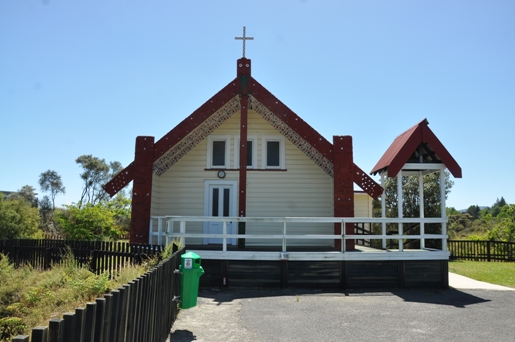
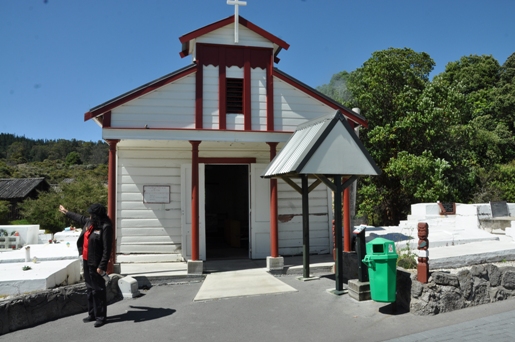
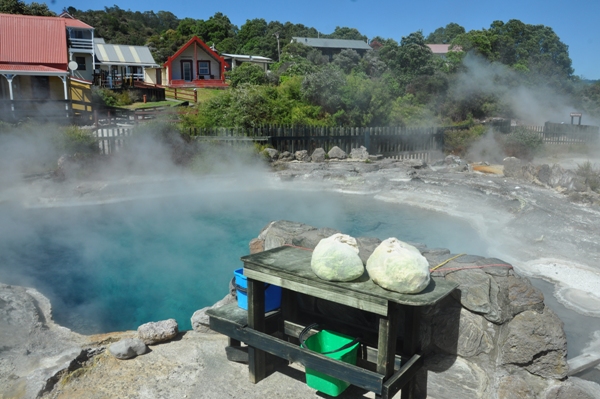
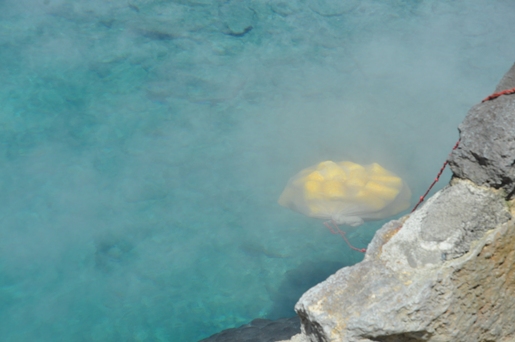
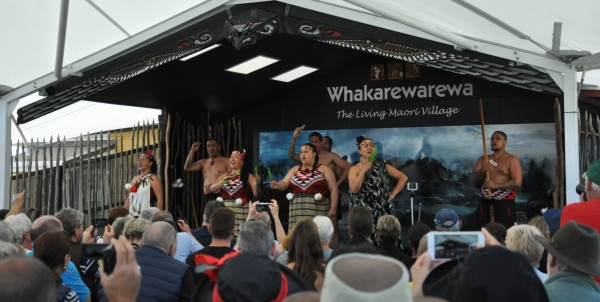
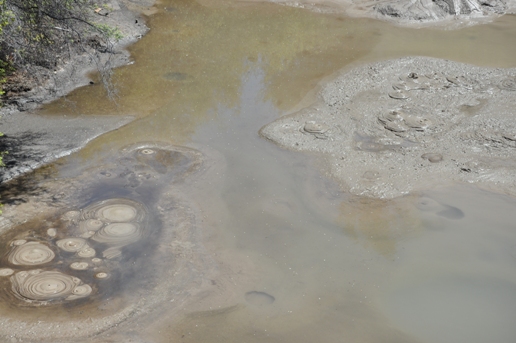
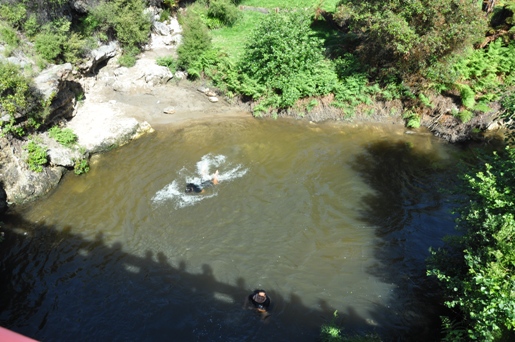
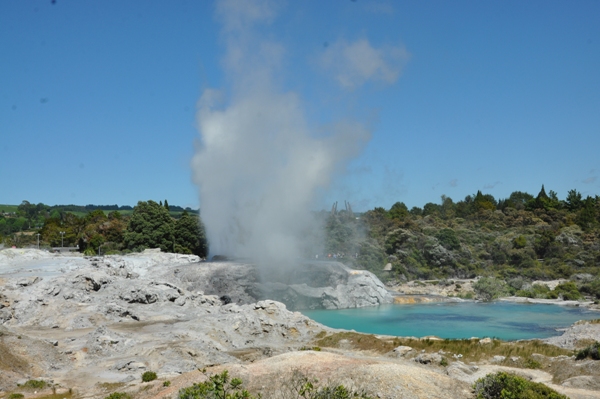
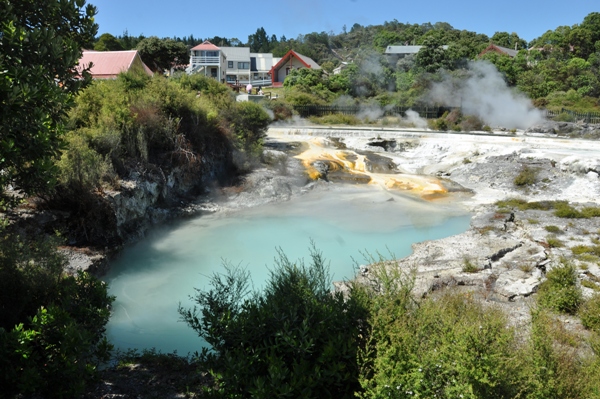
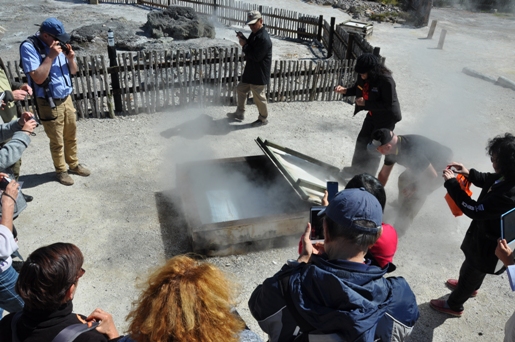
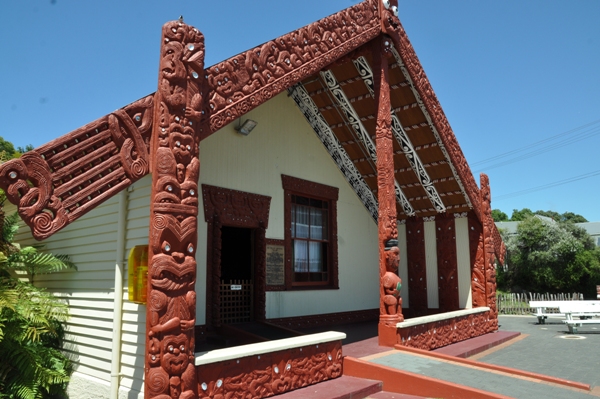
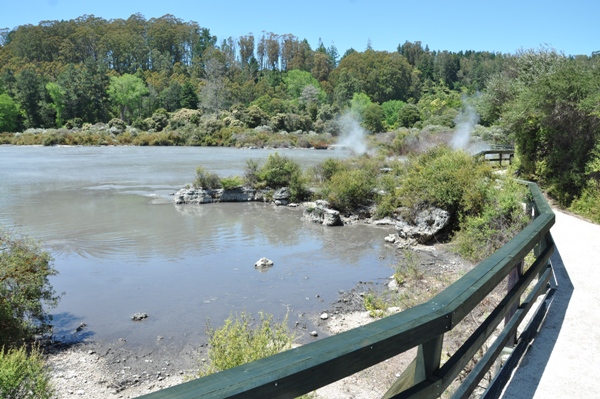
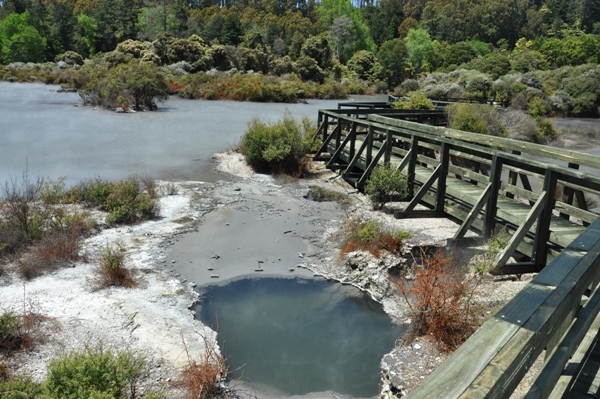
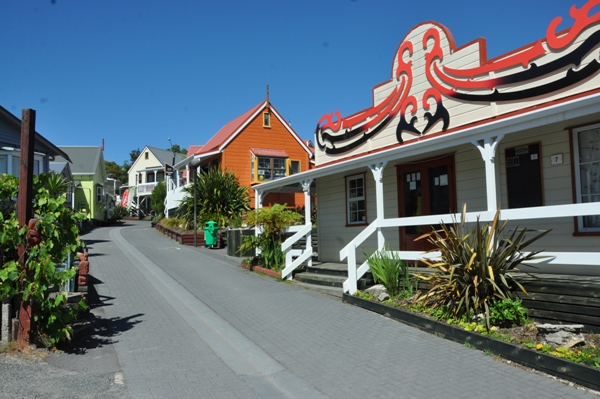
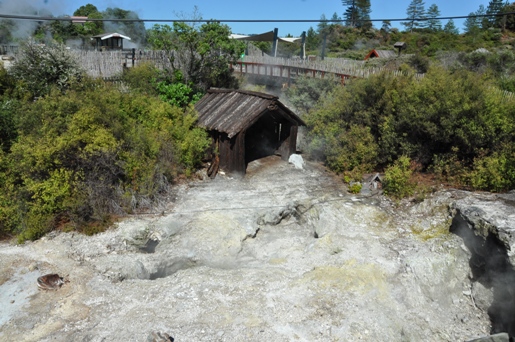
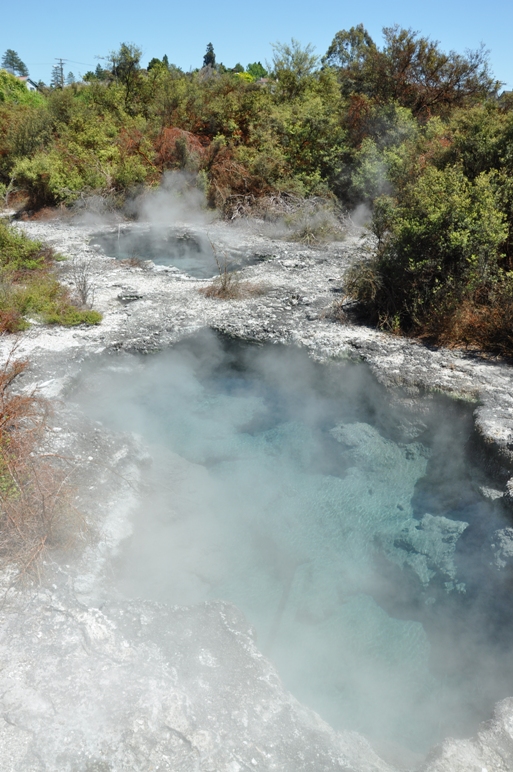
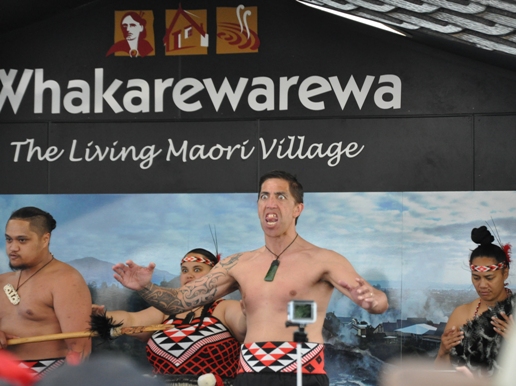
Whare Tipuna - Ancestral Meeting House
Named for a great ancestor Wahiao. The best of all Maori carving is saved for the Ancestral Meeting House. the carver takes pride in displaying his artistic skill and knowledge as he creates the history, whakapapa (genealogy) of his people. Without a written language, he tells the stories and legends of his people and their tribal connections through his carvings.
Wharepuni - Pre European House
Traditionally natural materials, Kaponga (Tree Fern), were utilised to build wharepuni homes. The first occupants of Whakarewarewa built directly on top of the geothermal area to take advantage and avilability of the heat and warmth.
Catholic Church
This church is over 110 years old. Many family members of Ngati Wahiao are Catholic and are buried in the tombs surrounding the church building.
Cooking Pools
Residents of the village utilise these pools for cooking. On the table are bundles of corn.
Corn Cooking
Cooking corn in the pools.
Steam Box Hangi
The first inhabitants of the village discovered by trapping the heat from the ground they could cook food, which has always been the traditional way of cooking within the village.
Te Arawa Anglican Church
After the Tarawera eruption (1886) many of the survivors who were Anglican moved to be with family living in Whakarewarewa and so brought with them the faith of the Anglican Church.
Penny Divers under bridge
The first bridge into the village was erected in 1885. Before, the only way visitors could enter into the village was to be carried across the river by the men. Generations of local village children have jumped from the bridge for pennies tossed into the river by visitors crossing the bridge hence the nickname Penny Divers - the tradition continues today.
Te Werenga
Mud pools were bubbling. The mud is renowned for healing arthritis, lumbago, rheumatism and it is also said to give your skin a younger appearance. The temperature of the mud is between 80-90 degrees Celsius and has the consistency like quick sand.
Pools along Whakanuia Track
Te Roto A Tamaheke along Whakanuia Track
Pohutu Geyser
This is as close as you can get to the geysers. The small blue lake below the geyser terraces is good for swimming but only for the village residents.
Local performing group Te Pakira with traditional and modern Maori songs and dance.
Te Roto A Tamaheke along Whakanuia Track
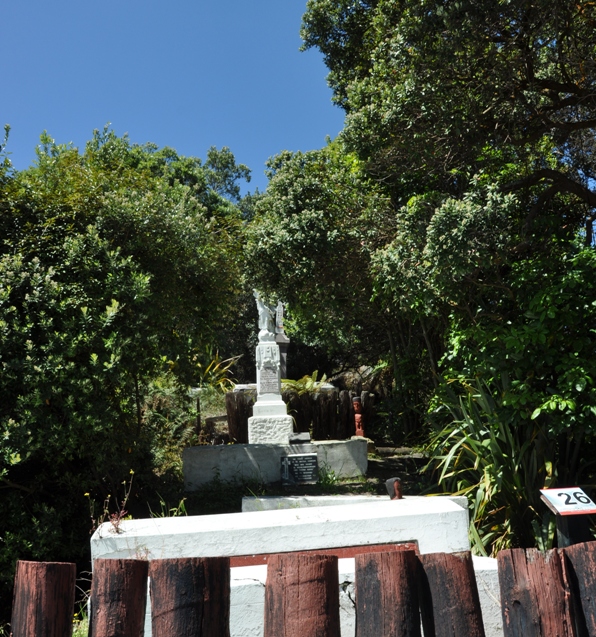
Urupa - Cemetery
Due to on-going geothermal activity underground, bodies of those passed are placed in tombs above the ground.

















